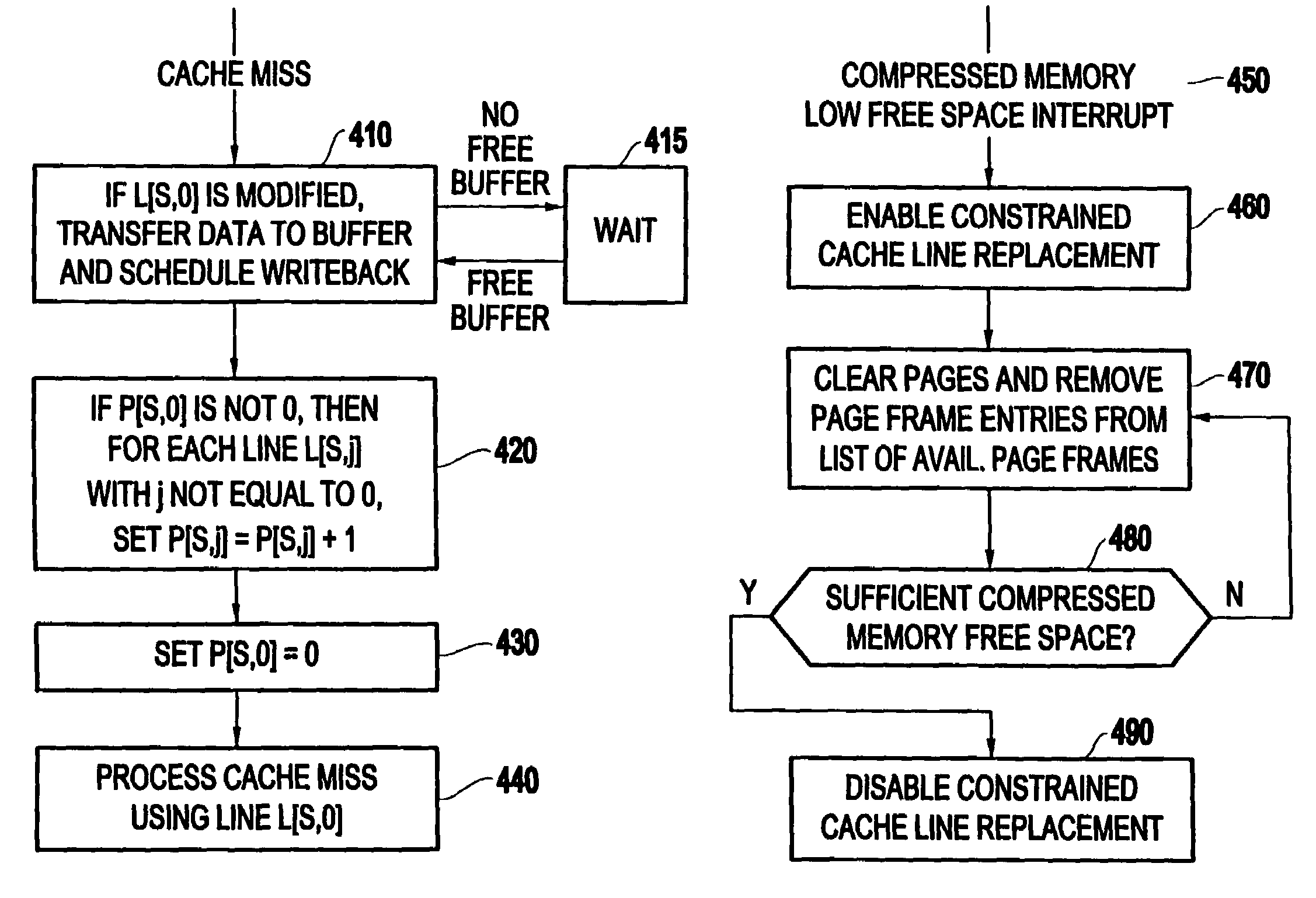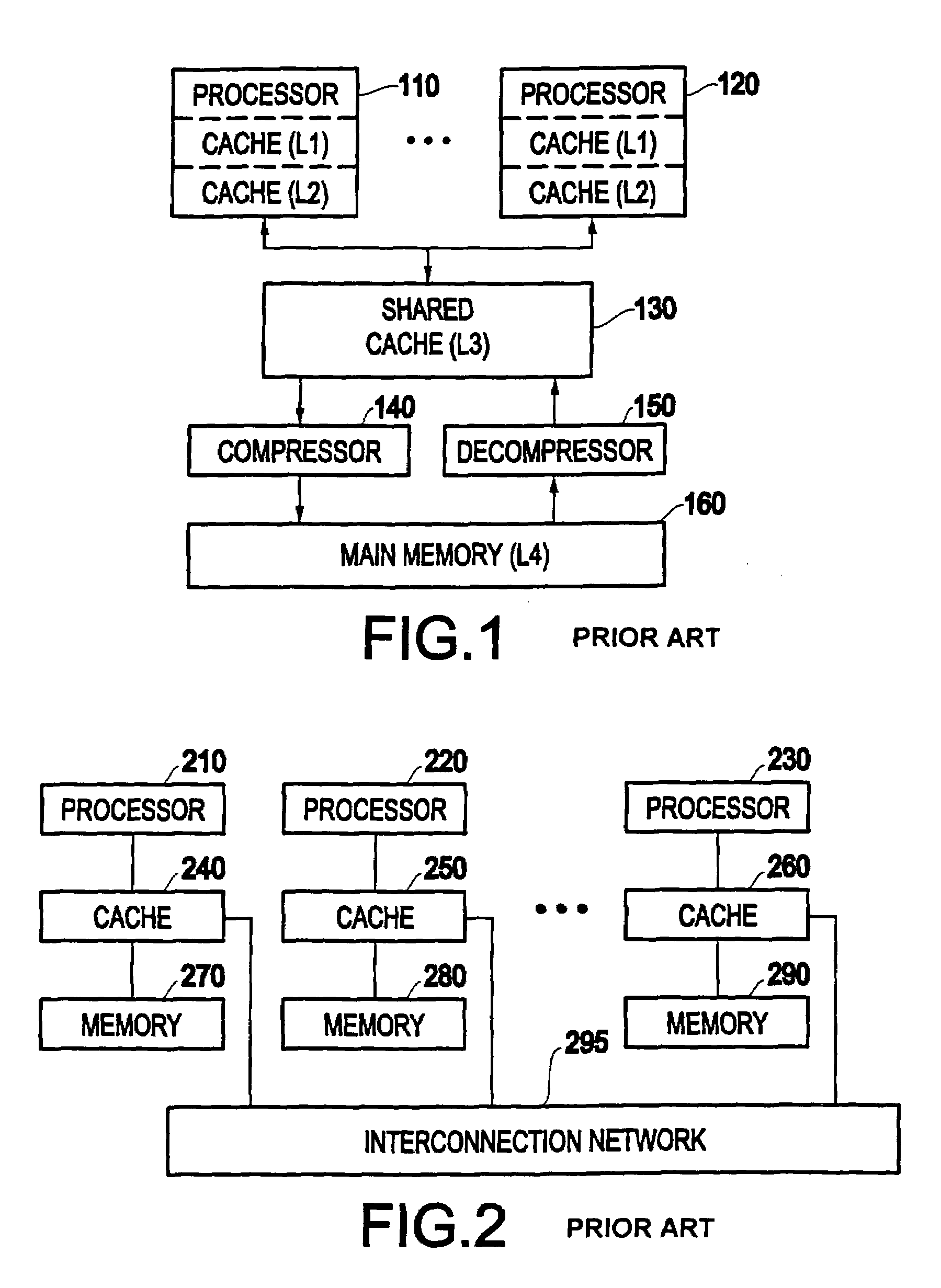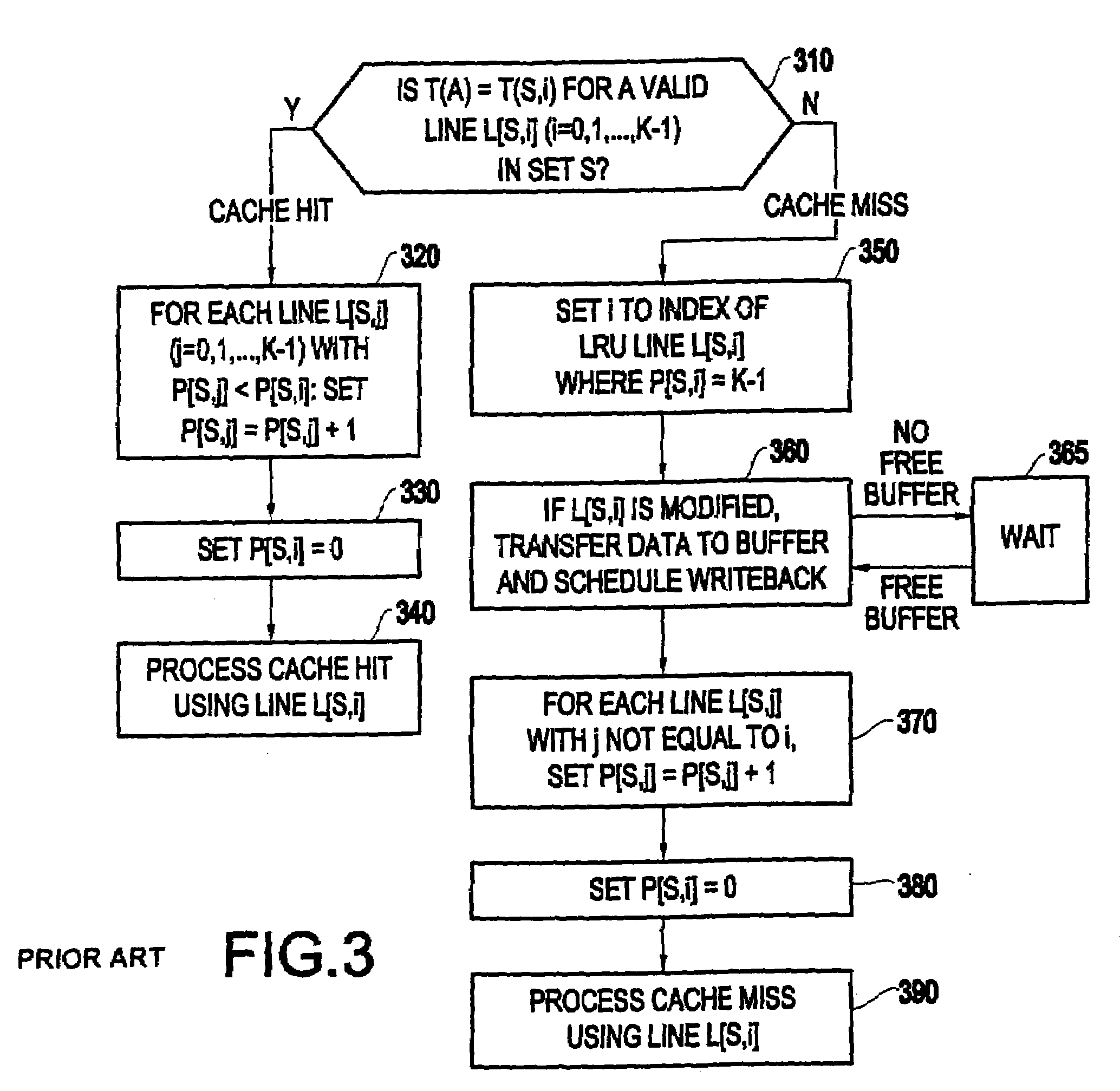Cache configuration for compressed memory systems
a memory system and configuration technology, applied in the field of new cache configurations, can solve the problems of unacceptably large amount of free space in the compressed memory system to ensure that all modified cache lines can be written back, the data compression of the compressed memory system can vary dynamically, and the writeback of modified cache lines could fail, so as to avoid potential chain reactions reduce the amount of free space required to guarantee forward progress during operating system handling of low free space conditions, and reduce the effect of free spa
- Summary
- Abstract
- Description
- Claims
- Application Information
AI Technical Summary
Benefits of technology
Problems solved by technology
Method used
Image
Examples
Embodiment Construction
[0023]Caches are typically designed using set-associativity, as follows: in a K-way set-associative cache with M lines, there are M / K sets, where each such set contains K lines, and each real memory address aligned on a cache line boundary maps to a uniquely determined set (for example see the book by Stone, High-Performance Computer Architecture 3rd. ed., page 38). Each real memory address A is uniquely identified (at cache line size granularity) by its set number S(A) and its tag T(A). Given a real memory address, its tag and set number are computed, and the presence of data at this address in the cache is found by mean of the cache directory. The cache directory also maintains, for each cache line, the status of that cache line (for example, clean, modified, or invalid, together with in some designs the LRU state of the line). All of this is known in the extensive art related to cache design for computer systems. For example, in addition to the previously mentioned book by Stone,...
PUM
 Login to View More
Login to View More Abstract
Description
Claims
Application Information
 Login to View More
Login to View More - R&D
- Intellectual Property
- Life Sciences
- Materials
- Tech Scout
- Unparalleled Data Quality
- Higher Quality Content
- 60% Fewer Hallucinations
Browse by: Latest US Patents, China's latest patents, Technical Efficacy Thesaurus, Application Domain, Technology Topic, Popular Technical Reports.
© 2025 PatSnap. All rights reserved.Legal|Privacy policy|Modern Slavery Act Transparency Statement|Sitemap|About US| Contact US: help@patsnap.com



